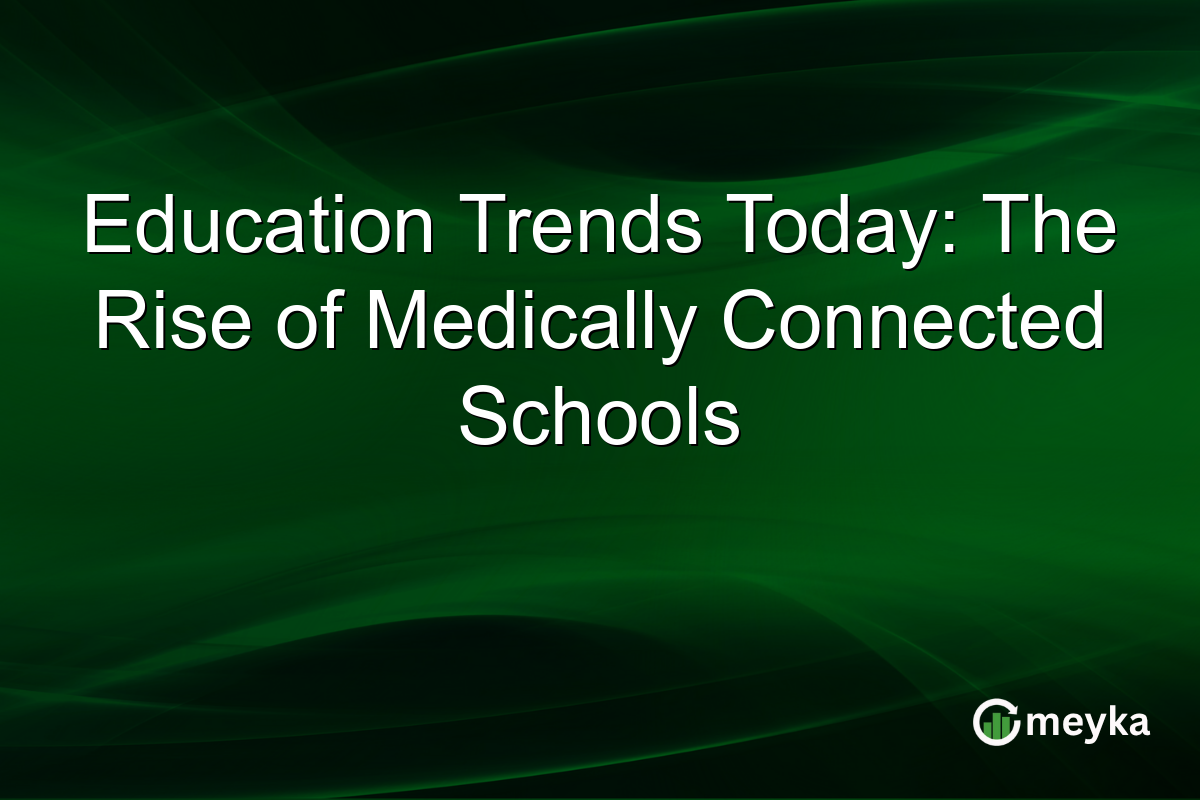Education Trends Today: The Rise of Medically Connected Schools
Medically connected schools are emerging as a significant trend in education. In 2025, these institutions are gaining attention for their role in integrating health services directly into the school environment. This development reflects a growing commitment to comprehensive child wellness, combining education with accessible health services. As schools embrace medical-education integration, there are opportunities for growth in education technology and healthcare services.
The Emergence of Medically Connected Schools
Medically connected schools integrate health services with educational environments. This approach addresses both physical and mental health needs alongside academic requirements. In recent years, education trends in 2025 show a marked increase in schools adopting in-house medical facilities. These innovations are prompted by a desire to improve student health outcomes, reduce absenteeism, and enhance learning experiences.
Several pilot programs have reported positive outcomes. Schools equipped with medical staff have noted decreases in emergency room visits and improved attendance rates. These successes are encouraging more educational institutions to consider medical-education integration. For example, incorporating mental health professionals addresses rising concerns about student wellness, a topic gaining traction on social platforms like X. [X post about school health initiatives]
Impact of Medical-Education Integration on Schools
Integrating medical facilities into schools presents various benefits. Firstly, it minimizes the logistical challenges families face when accessing healthcare. Secondly, this integration supports the early detection of health issues, potentially reducing long-term healthcare costs. Schools with on-site medical services can offer vaccinations, check-ups, and mental health support, creating a holistic educational environment.
However, the implementation requires careful planning and support from government policies. The concept aligns well with current school health initiatives that advocate for statewide support to ensure all students have access to necessary health services. Additionally, education trends 2025 emphasize the importance of data security and privacy when managing students’ medical information.
Government and Policy Support
For medically connected schools to thrive, robust government support is essential. Policies encouraging collaboration between education and healthcare sectors can significantly impact the success of these initiatives. The government plays a crucial role in offering grants and guidance for schools to build and maintain medical facilities.
Efforts are underway to provide legislative backing to enhance these programs. This support is reflected in recent policy proposals aimed at funding healthcare infrastructure in schools. Aligning educational goals with health initiatives ensures sustainability and effectiveness in improving student outcomes. Government-backed programs can help create a blueprint for nationwide adoption of medical-education integration strategies.
Final Thoughts
The rise of medically connected schools highlights a significant trend in the evolution of the education system. By integrating health services within educational environments, these schools provide comprehensive support to students, fostering better health and academic outcomes. As education trends in 2025 continue to evolve, the integration of medical care represents a promising avenue for investment, focusing on technological innovations and healthcare services. With the right policy support, this movement could redefine educational frameworks, enhancing the overall development and well-being of students across the nation. These advancements present growth opportunities for investors in the education and health sectors, paving the way for a healthier, more educated future.
FAQs
Medically connected schools integrate healthcare services with education. They provide in-house medical staff and facilities for physical and mental health care, aiming to improve student health and educational outcomes.
These schools address healthcare access gaps by providing direct services to students. This integration can lower absenteeism, enhance learning, and reduce healthcare costs by offering early interventions and comprehensive support.
Students benefit from improved health access, which can lead to better attendance and academic performance. On-site healthcare services provide immediate care, mental health support, and preventive measures like vaccinations.
Disclaimer:
The content shared by Meyka AI PTY LTD is solely for research and informational purposes. Meyka is not a financial advisory service, and the information provided should not be considered investment or trading advice.






